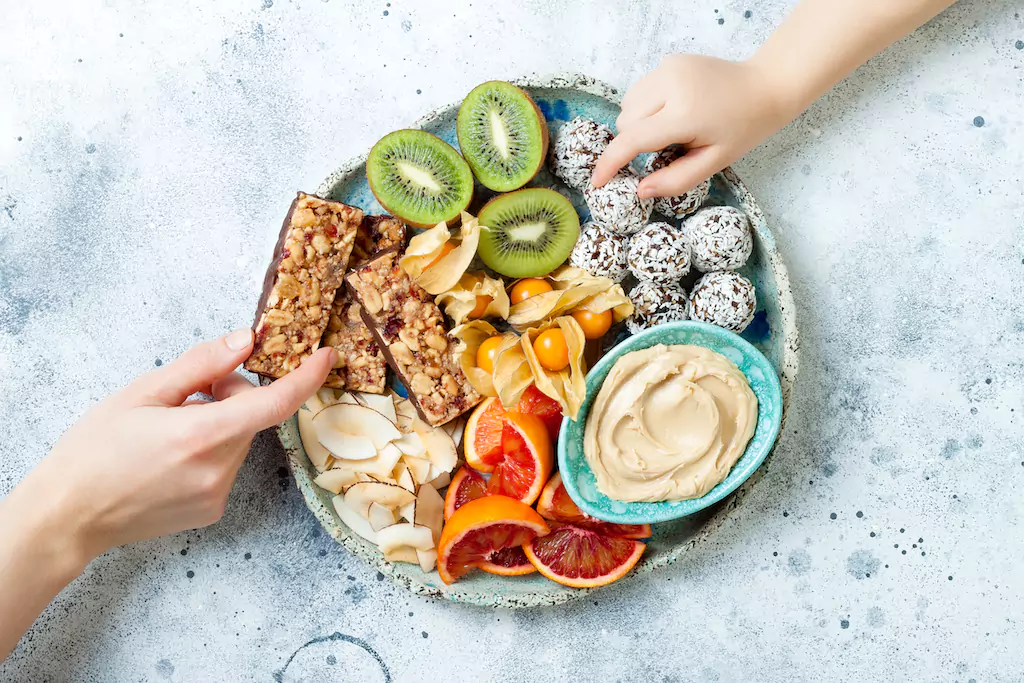What if you could lose weight without intense diets or crazy workout plans? Understanding your body’s basal metabolic rate (BMR) is the key. Your BMR is the minimum number of calories your body needs to perform essential functions.
Knowing your BMR reveals how many calories you burn through normal daily activity. With this information, you can create the calorie deficit needed for weight loss.
This in-depth guide explains exactly what BMR is, how to calculate yours, and most importantly, how to use it to finally lose the weight and keep it off.
What is Basal Metabolic Rate?
Your basal metabolic rate is the number of calories your body requires to keep your organs functioning and carry out involuntary tasks like breathing. It makes up 60-75% of the total calories you burn daily.
BMR goes by other names like resting metabolic rate (RMR) or resting energy expenditure (REE). But they all refer to the same baseline calorie burn.
Underlying Factors That Determine BMR
Several key factors impact BMR:
• Body size and composition – More cells require more energy. Fat cells burn fewer calories than muscle cells.
• Sex – Men tend to have less fat and more muscle mass than women.
• Age – Metabolism slows as you get older.
• Genetics – Some people inherit a faster metabolism.
• Hormones like thyroid, growth hormone, and testosterone.
As you can see, BMR depends more on body size and composition than on age or genetics. Gaining muscle directly increases metabolism.
BMR vs. Total Daily Energy Expenditure
BMR only accounts for the calories you burn at rest. Your total daily energy expenditure (TDEE) covers all calories burned in a day. TDEE factors in BMR plus:
• Thermic effect of food (calories burned digesting food)
• Physical activity
• Non-exercise activity thermogenesis (NEAT) like fidgeting and walking
Knowing both your BMR and TDEE allows you to create the optimal calorie deficit for weight loss.
Why Understanding BMR Matters for Weight Loss
To lose fat, you need a calorie deficit – burning more calories than you consume. A pound equals 3,500 calories. So to lose one pound per week, you’d need a 500 calorie per day deficit.
Without knowing your BMR and TDEE, attempts at calorie restriction often backfire. You might over-restrict, resulting in fatigue, cravings, and binges. Or you could underestimate your intake and set calorie goals too high to lose weight.
Tracking BMR helps determine exactly how many calories you need to eat for healthy, sustainable weight loss.
Calculating Your Basal Metabolic Rate
BMR Calculator
Directly measuring BMR requires expensive laboratory equipment. Instead, established mathematical equations based on factors like height, weight, age, and sex provide close estimates.
Two popular BMR equations are:
- Revised Harris-Benedict Equation
Men:
BMR = 88.362 + (13.397 x weight in kg) + (4.799 x height in cm) – (5.677 x age in years)
Women:
BMR = 447.593 + (9.247 x weight in kg) + (3.098 x height in cm) – (4.330 x age in years)
- Mifflin-St Jeor Equation
Men:
BMR = (10 x weight in kg) + (6.25 x height in cm) – (5 x age in years) + 5
Women:
BMR = (10 x weight in kg) + (6.25 x height in cm) – (5 x age in years) – 161
Online BMR calculators automatically plug your details into these equations. But you can also calculate yours manually.
For example, a 43-year old man, 5’11” tall weighing 180 pounds has a BMR of:
- Revised Harris Benedict:
Weight (kg) = 180lb/2.2 = 81.8kg
Height (cm) = 5’11” = 180.34cm
BMR = 88.362 + (13.397 x 81.8) + (4.799 x 180.34) – (5.677 x 43)
= 1,804 calories
- Mifflin-St Jeor:
Weight (kg) = 81.8kg
Height (cm) = 180.34cm
BMR = (10 x 81.8) + (6.25 x 180.34) – (5 x 43) + 5
= 1,734 calories
As you can see, his BMR equals ~1,700-1,800 calories using either equation.
Tracking BMR Over Time
BMR gradually declines with age as metabolism slows. So recalculate your BMR about every 6 months using an online calculator or formula.
If you experience an abnormal change in weight despite eating the same diet, get your BMR tested to identify any metabolic issues.
Converting BMR to Total Daily Energy Expenditure
Your total daily energy expenditure (TDEE) represents all the calories you burn in a day. To determine your TDEE based on your BMR:
- Calculate your BMR using one of the equations above or an online calculator
- Multiply by an activity factor based on your lifestyle:
- Sedentary (little/no exercise): BMR x 1.2
- Light (light exercise 1-3 days/week): BMR x 1.375
- Moderate (moderate exercise 3-5 days/week): BMR x 1.55
- Very active (intense exercise 6-7 days/week): BMR x 1.725
- Extremely active (intense exercise daily + physical job): BMR x 1.9
Using the example above, if the 43-year old man exercises moderately 3 days a week, his TDEE is:
BMR = 1,804 calories
Activity Factor = 1.55 (for moderate exercise)
TDEE = 1,804 x 1.55 = 2,796 calories
As you can see, his TDEE far surpasses his BMR due to his activity level and exercise regimen. This allows him to eat more while still losing weight.
Using BMR to Create a Calorie Deficit for Weight Loss
To lose one pound per week (equal to a 3,500 weekly calorie deficit), our example needs a 500 daily calorie deficit:
- TDEE = 2,796 calories
- Daily Calorie Intake for 1 lb/week weight loss = TDEE – 500 calories
= 2,796 – 500 = 2,296
So if he eats around 2,300 calories per day with his current activity level, he would lose about 1 pound per week.
If his weight loss stalls, he can recalculate his BMR and TDEE. Other options include slightly reducing calories, adding more exercise, or trying intermittent fasting.
Small tweaks go a long way versus extreme changes when using BMR to guide weight loss.
How to Lose Weight by Boosting Your BMR
Gaining muscle provides the most direct way to increase BMR. Because muscle burns more calories than fat, adding muscle elevates your metabolism.
Aim for two strength training sessions per week minimum. Squats, deadlifts, overhead presses, rows, and bench presses incorporate multiple large muscle groups.
While cardio burns calories during the actual workout, its effect on BMR is smaller and more temporary. The metabolic boost from strength training persists even at rest.
While bulking up dramatically won’t suit everyone’s goals, building just a few pounds of lean muscle makes a measurable difference.
Additional Tips to Boost Your Metabolism
Combine strength training with these other science-backed strategies:
• Get enough sleep – Sleep deprivation can slow metabolism. Most adults need 7-9 hours per night.
• Eat more protein – Digesting protein burns the most calories. Aim for 0.7-1 gram per pound of body weight.
• Add compound movements – Exercises like squats and deadlifts burn more calories.
• Drink green tea – Compounds in green tea boost fat burning.
• Try HIIT workouts – High intensity interval training provides an “afterburn effect.”
• Reduce stress – High cortisol levels promote fat storage.
• Eat spicy foods – Spicy ingredients like chili peppers contain compounds that temporarily speed metabolism.
Be Patient and Persistent
BMR is a key factor in weight loss, but creating a calorie deficit does not guarantee overnight results. Stick with the plan, continually tweak your calorie goals and activity levels, and the results will come.
Understanding your body’s calorie requirements empowers you to transform your body composition. Calculate your BMR, adjust your diet and exercise routine accordingly, be patient through plateaus, and you will lose the weight.












